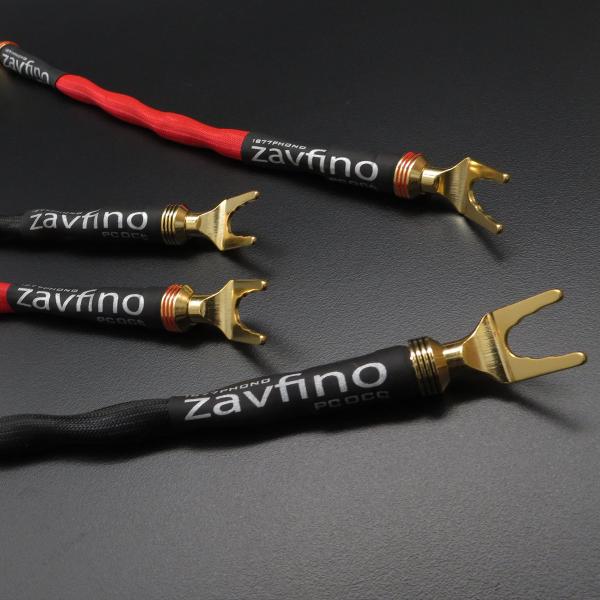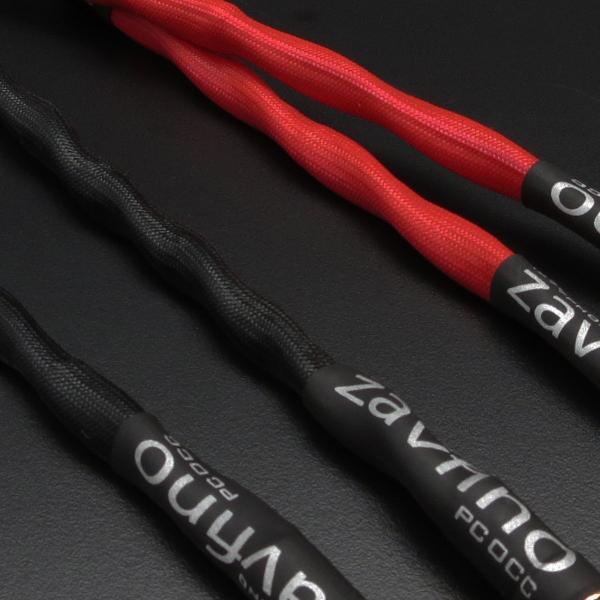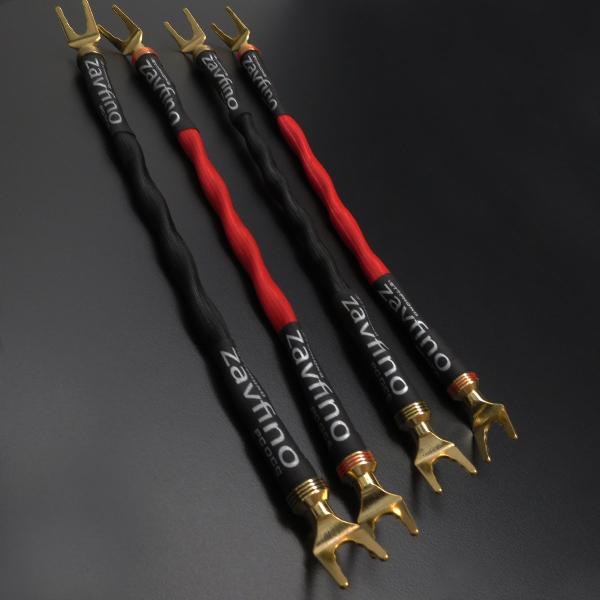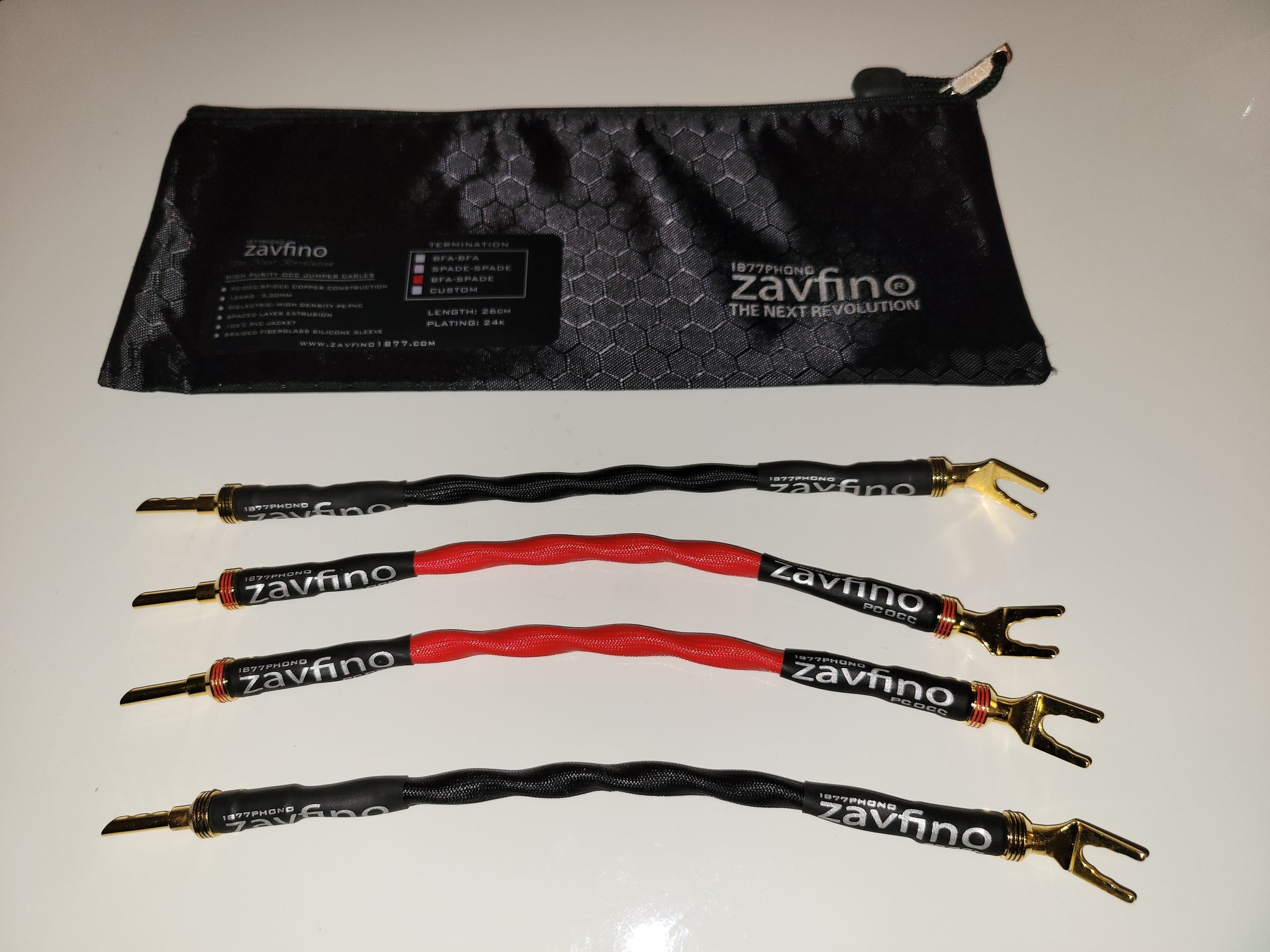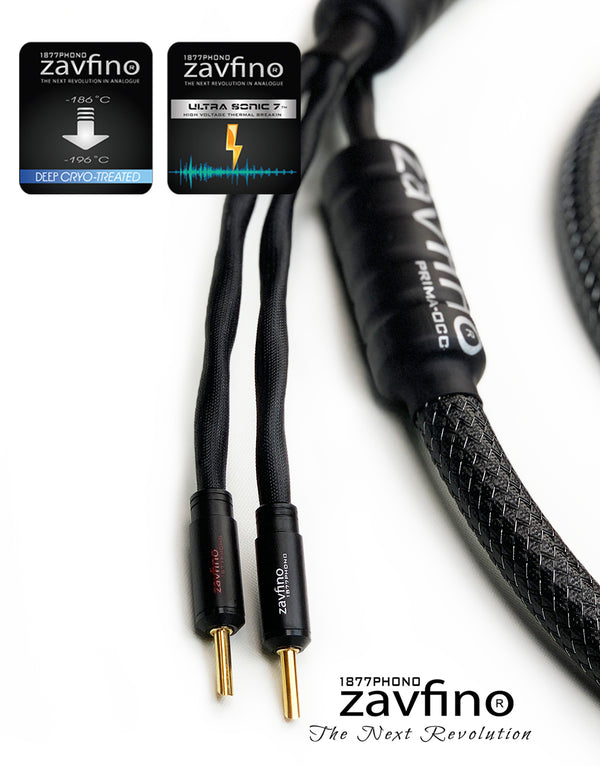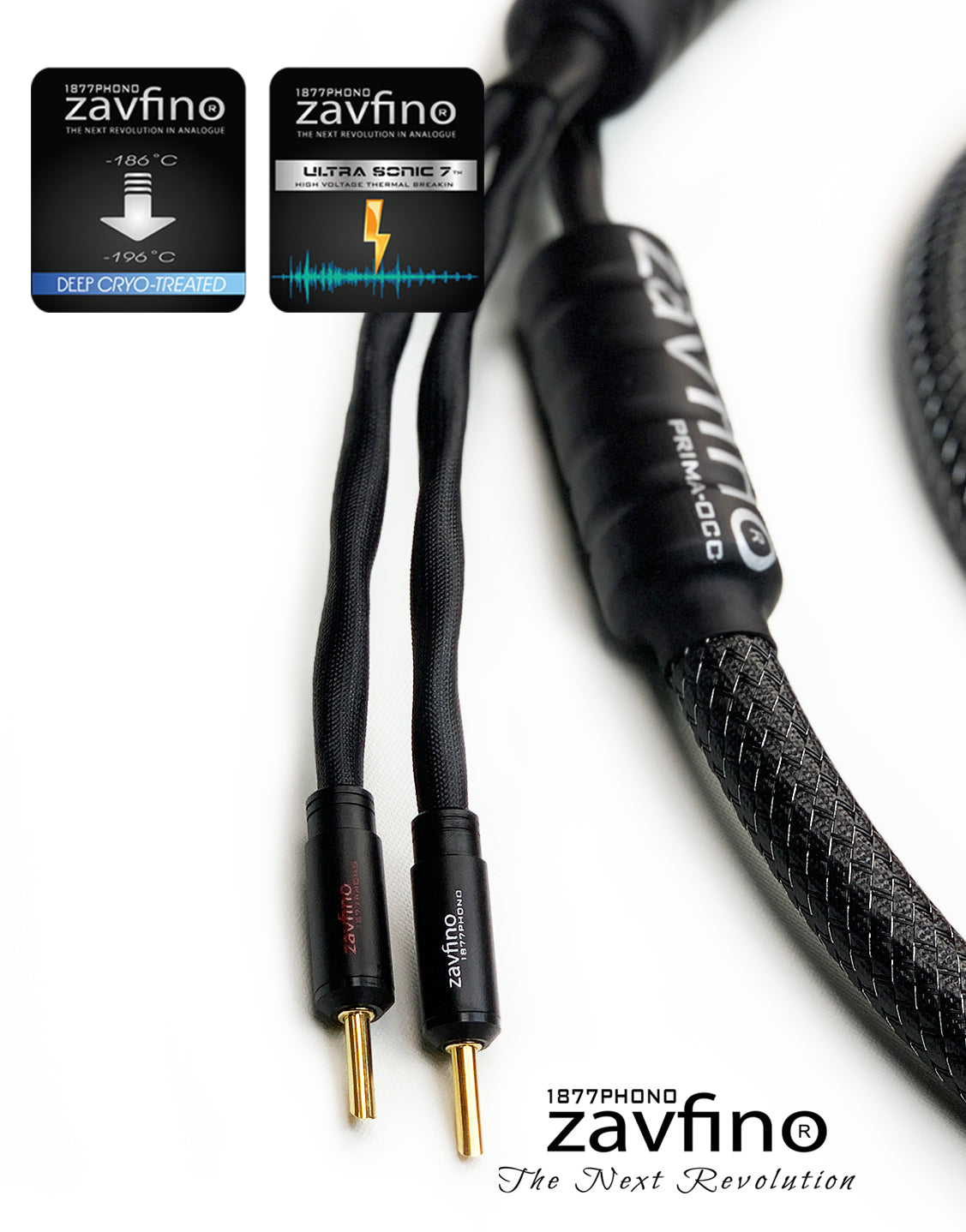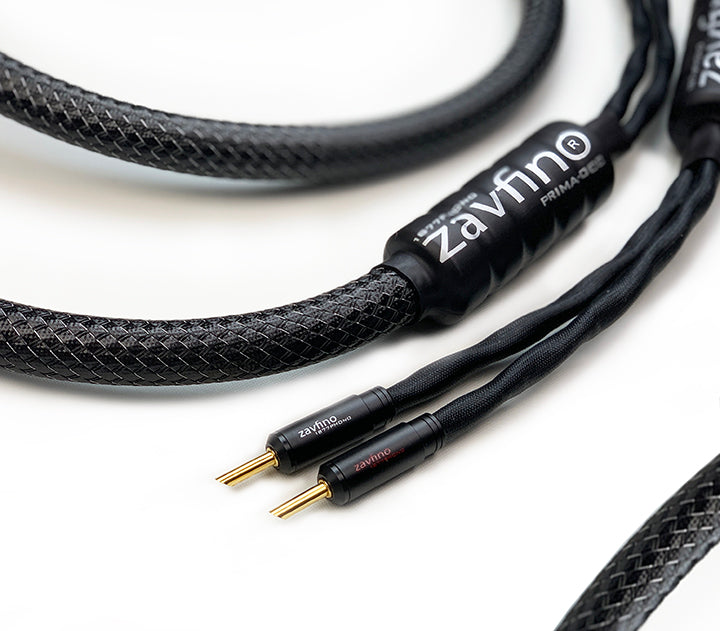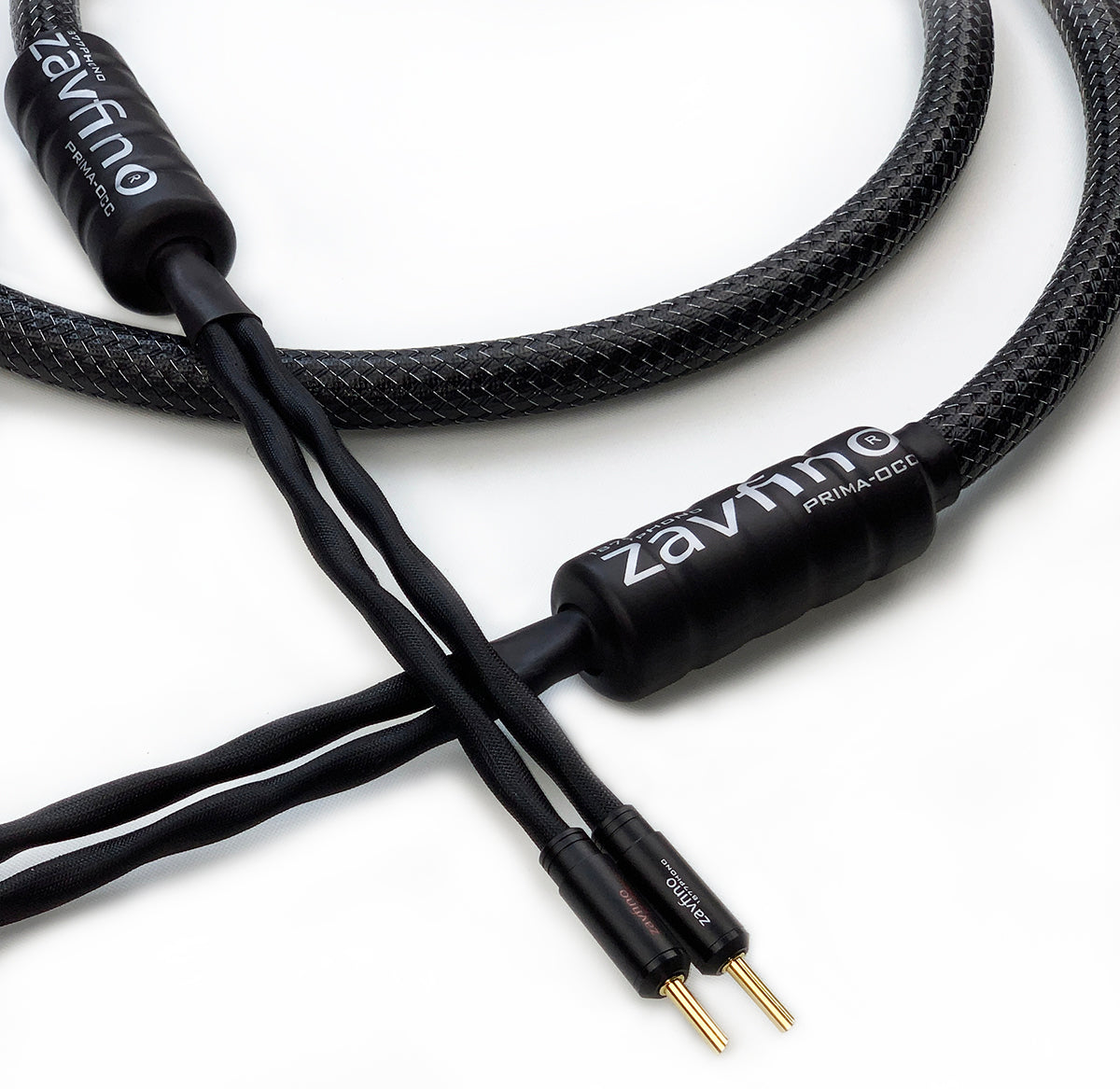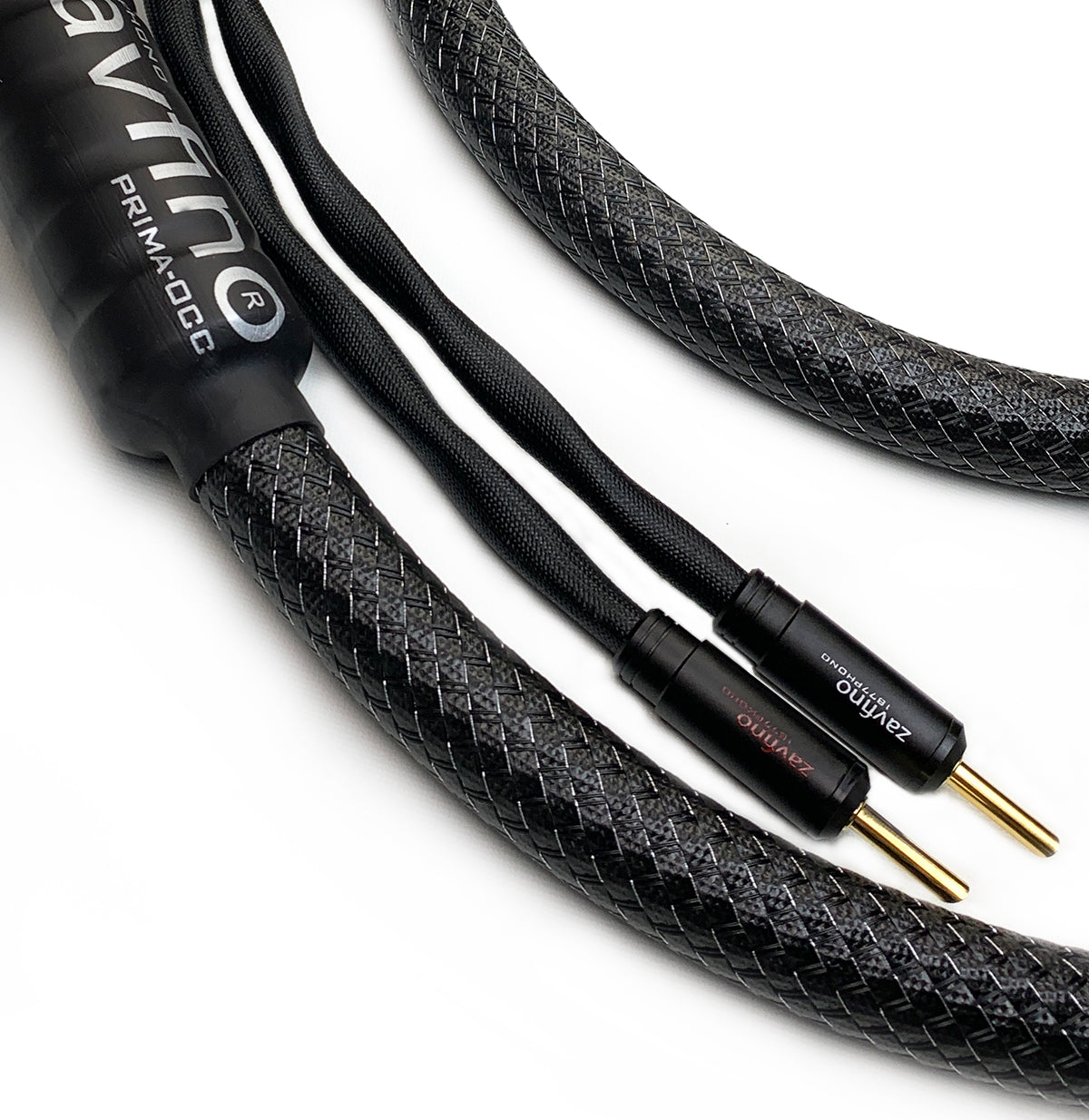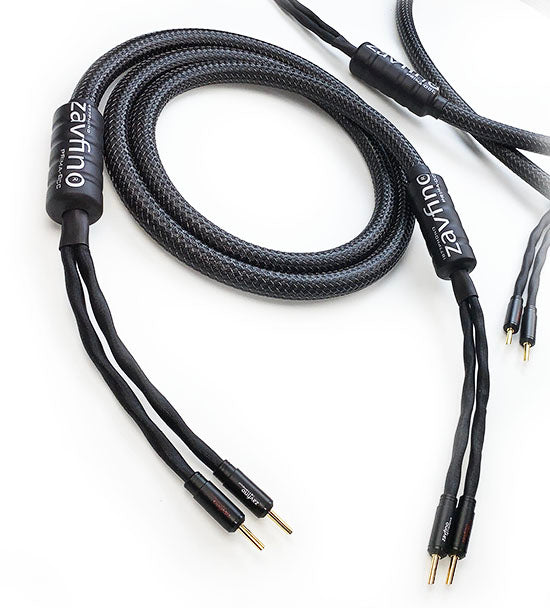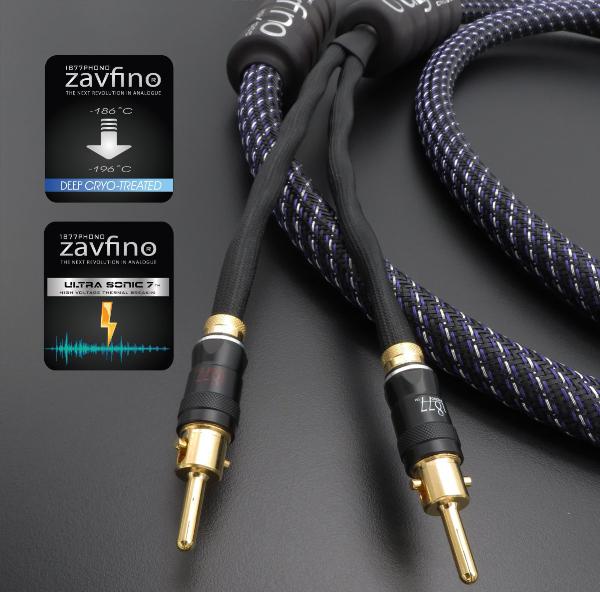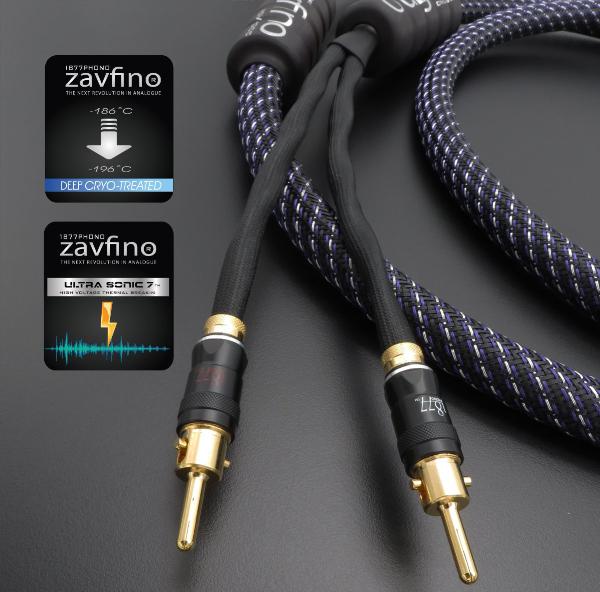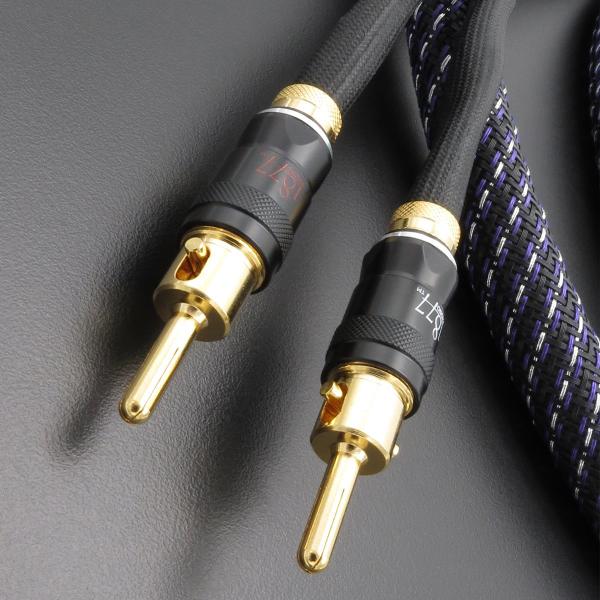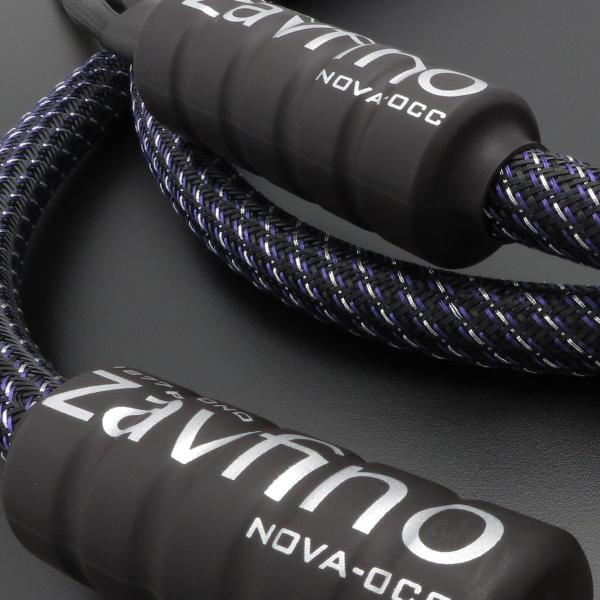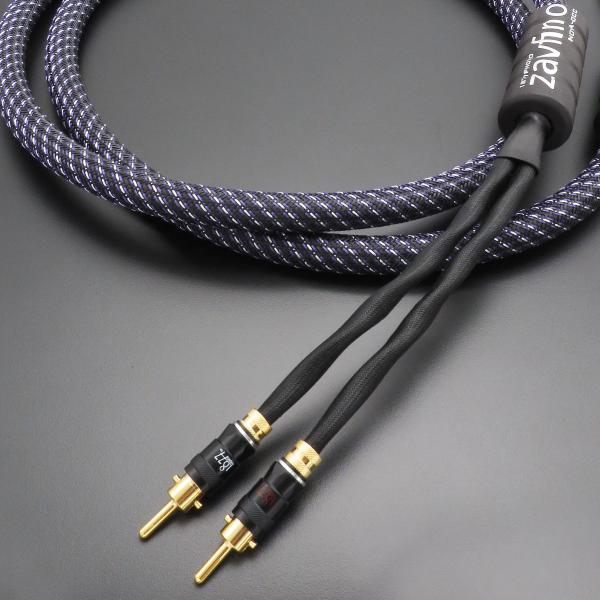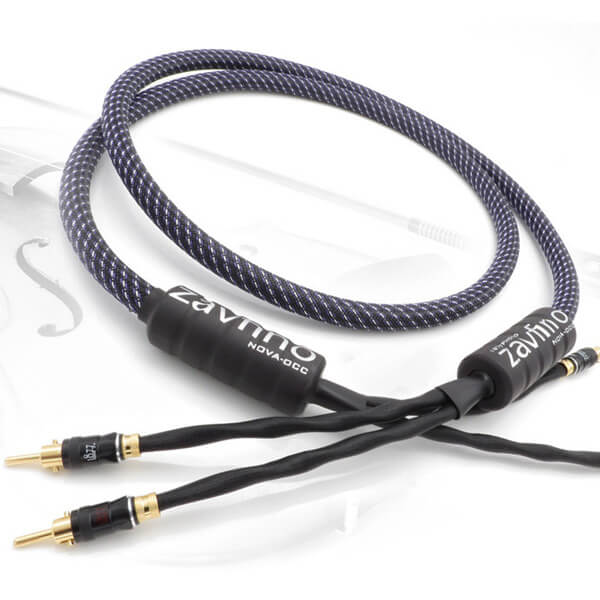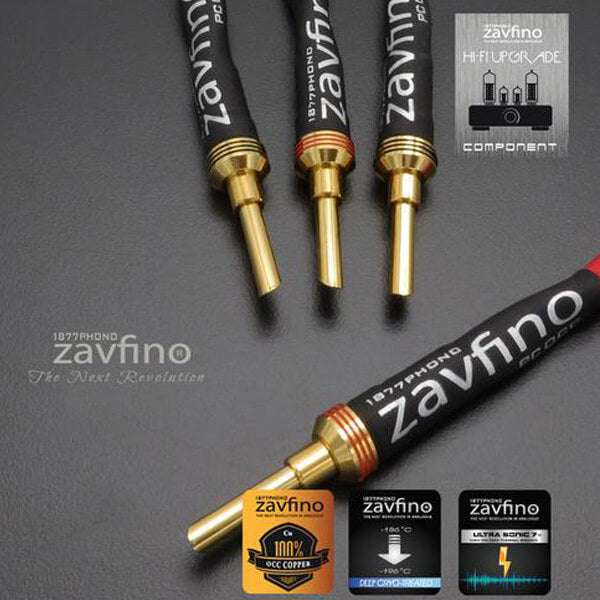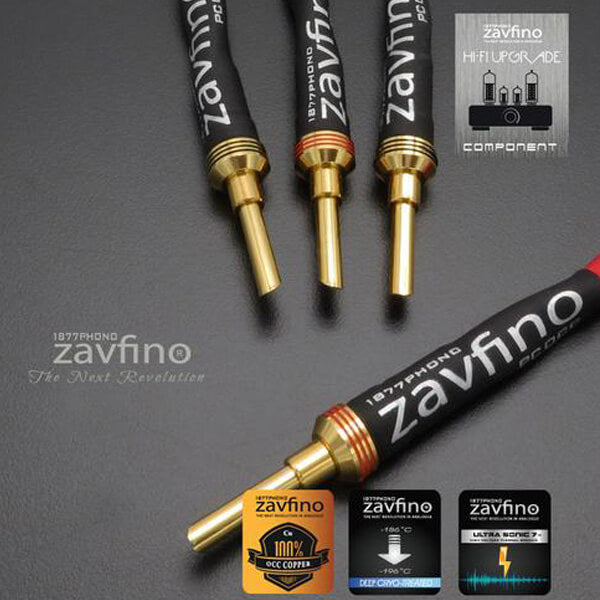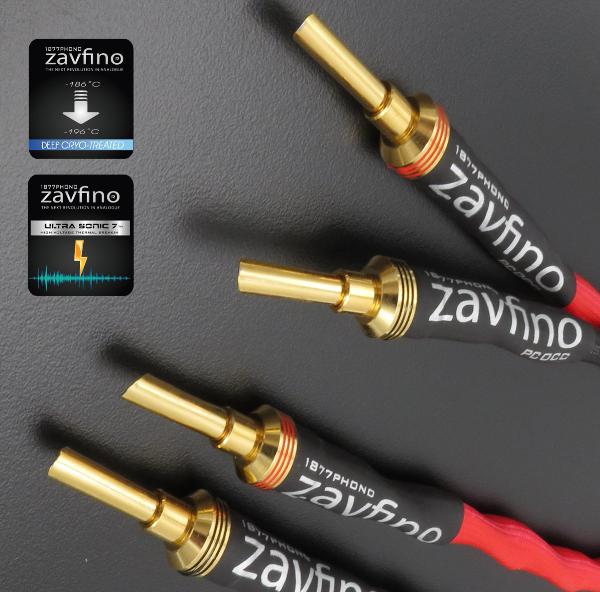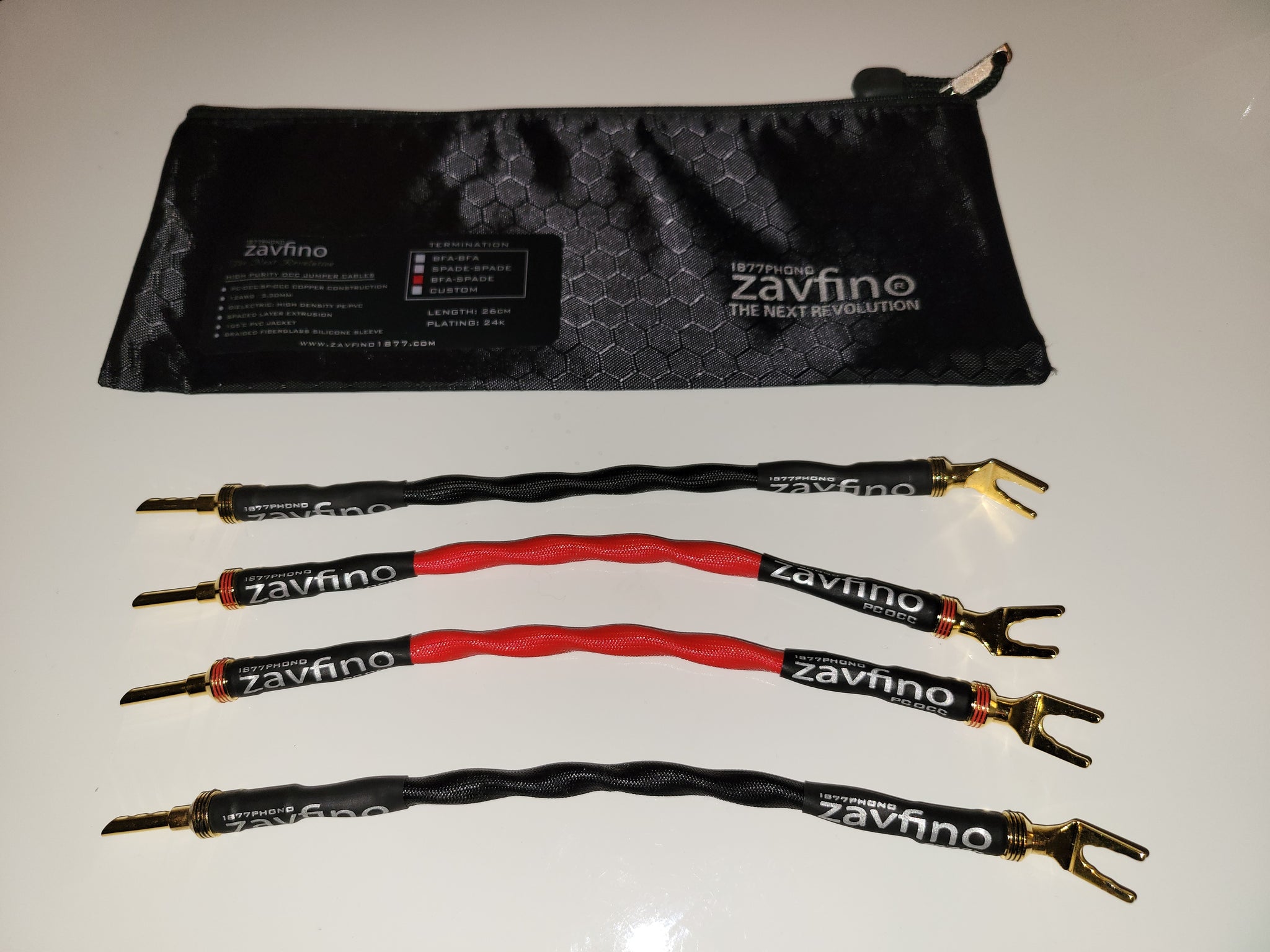Each OCC jumper is carefully hand assembled to ensure that each spade connector is securely attached and has full contact with the internal high purity OCC wires. Our 24k gold plated spades speaker are made to fit most modern binding posts and are high purity CNC machined copper.
For use with bi-wire enabled speakers
SPECIFICATION
● Silver Coated OCC Center conductor
● Litz construction
● Tight pitch stranding
● 12AWG gauge count per jumper
● Insulation/Dielectric 1: HPE Clear
● Insulation/Dielectric 2: High Density PVC
● Braided silicone fiberglass breakouts (black)
● Connector: 24k Gold plated CNC machined Spade
● Length: 260mm x4pcs
Deep Cryo™ Treatment
All of the conductors used in our cables undergo Deep Cryo™ treatment before the insulation is extruded over the metals. Our research has proven that the conductor—and only the conductor— benefits from cryo-treatment. Materials such as polyvinyl chloride (PVC™), Teflon™, PE, and Silicon™ can all be adversely affected by cold-temperature annealing. Cryo-treating non-conductors and insulating materials can cause them to break down and become brittle.
The purity, size, and molecular structure of each conductor determine the specific temperature within the -186ºC to - a 196ºC range that we cryo-treat it at. Zavfino’s research into cold temperature physics has proven that the absolute lowest temperature is not necessarily the best for cryo-treatment.
This is a two-stage process. In the first stage we draw the bare conductor through a ceramic die into an ultrasonic cleaning chamber that bombards the conductor with multiple ultrasonic frequencies. This emulsification process removes all debris from the surface of the wire down to the molecular level and leaves absolutely zero residues.
UltraSonic 7 High Voltage / Thermal Break-in
This is a two-stage process. In the first stage we draw the bare conductor through a ceramic die into an ultrasonic cleaning chamber that bombards the conductor with multiple ultrasonic frequencies. This emulsification process removes all debris from the surface of the wire down to the molecular level and leaves absolutely zero residues. After each individual wire is processed, we strand it into bundles and then subject the bundles to further treatment. During the second stage of the ultrasonic burn-in, we increase the voltage to a higher level that’s just below the threshold of the conductor. This adjustment in temperature allows us to get a unique “break-in effect” normally associated with cables that have had 30 to 40 hours of signal and/or current run through them.

